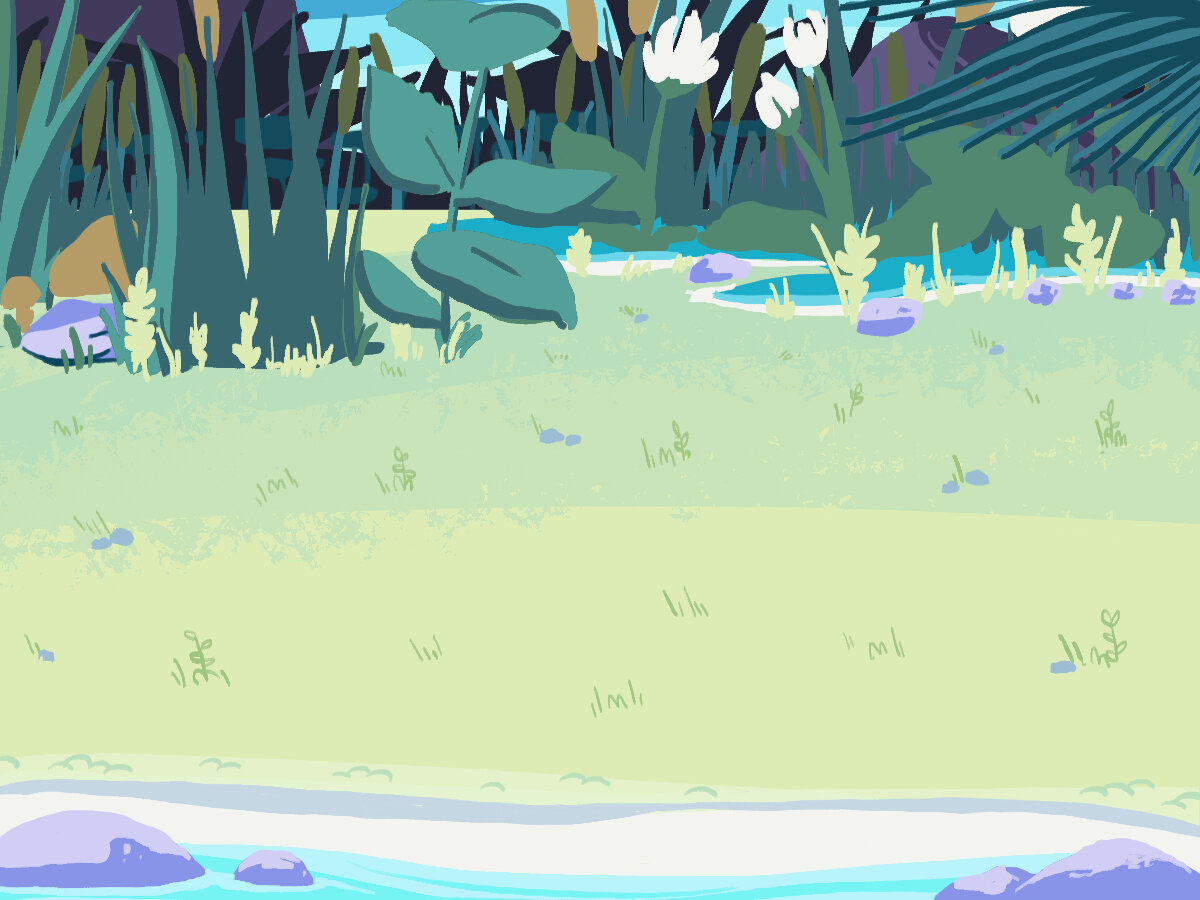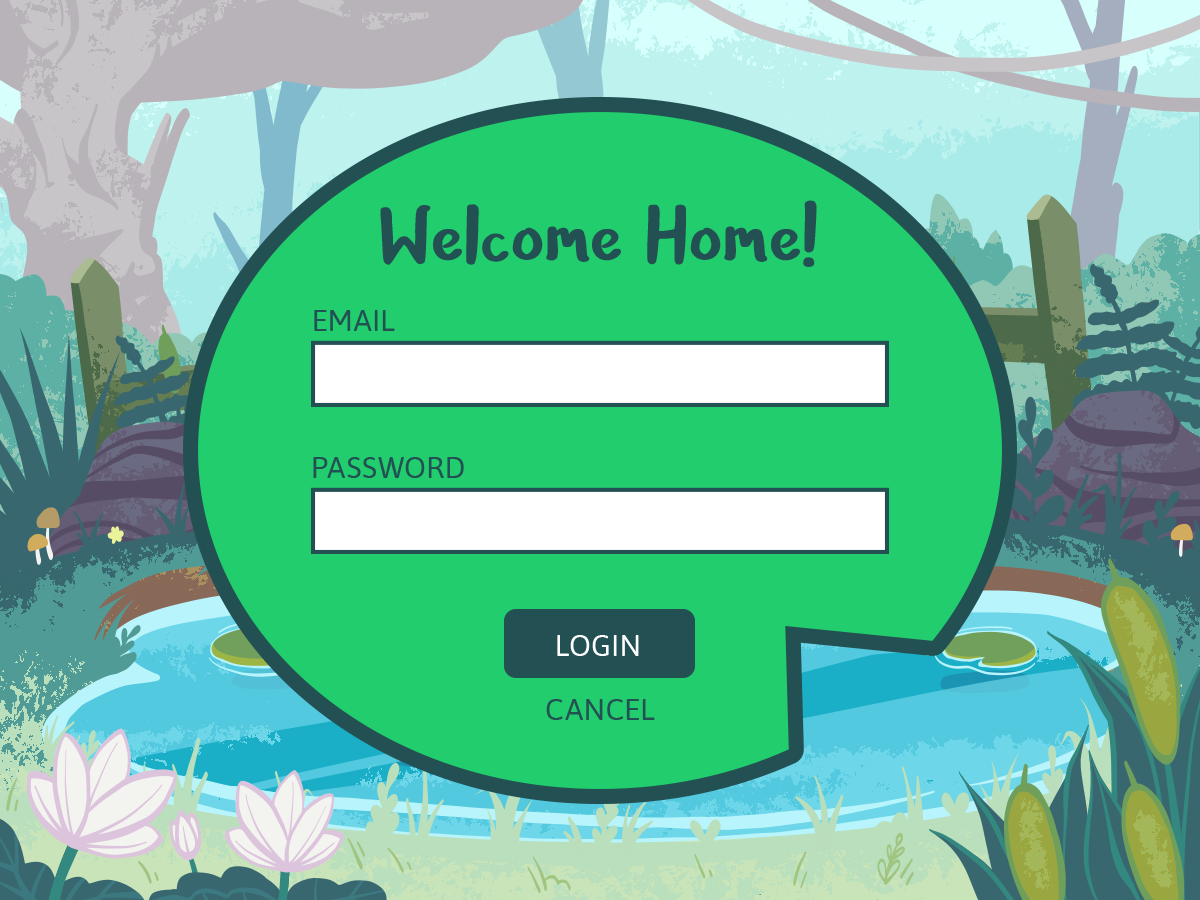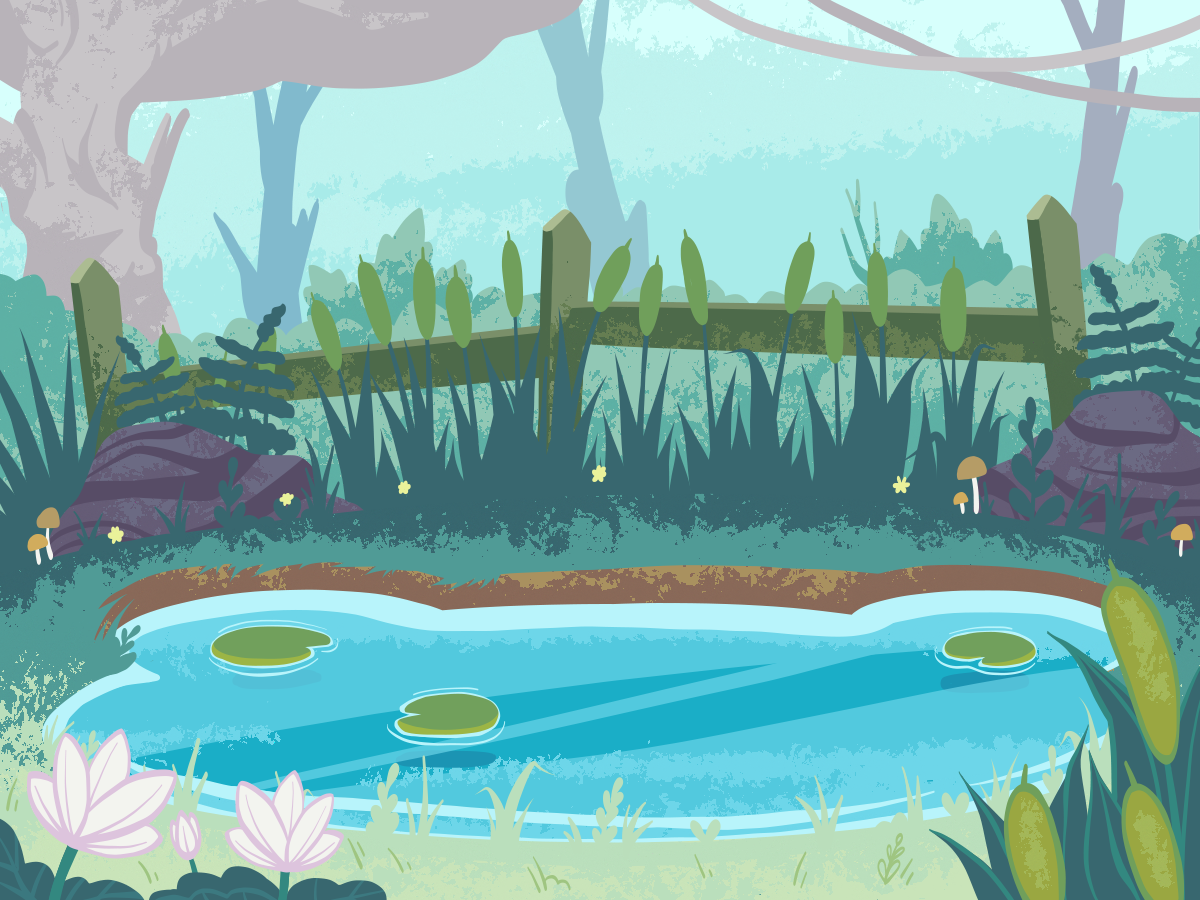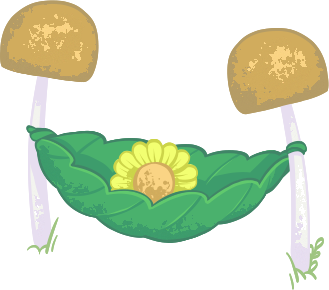Frog Junction
I was brought onto a life simulation game demo titled “Frog Junction” for the visual development and rough UI, and was completed in just over 2 weeks at the end of September 2020. I was to create the following assets:
Logo
Backgrounds
Title Screen, Character Selection Screen, and Main Environment Screen
Pop-Up Login Menu and Pop-Up Trade Window
Integrated Inventory Menu with Hat and World Prop Icons
3 Character Designs with Simple Walk Cycles in all Cardinal Directions
3 House Designs
3 World Props (Ultimately created 4)
4 Hats, each with its own walk cycle on every character
I wanted to make this game visually stand out against other life simulators and ran with the idea of “frog” from the game’s title. I took inspiration from Studio Ghibli’s Secret World of Arrietty and fairycore aesthetic to create a pastel and jewel toned miniature world of adorable pond critters.
Initial Sketches


Initial rough concepts of possible character designs, hats and their placement on each character model, home designs, the main game environment, and UI screens.
Rough Drafts







This stage mostly focused on more fleshed out designs of the chosen characters, home designs, the inventory menu in the main game environment, and title screen UI. The main goal was to settle on the feeling of the world being built.
Final Game Demo Assets
Figuring out the UI for the demo was a personal challenge since this is the first project where I’ve had direct influence over a UI’s appearance and functionality. The main hurdle was making the pop-up windows fit into the fairycore and pond aesthetic without being too obstructed by decoration. The final results were well-received by the client.















Character Models & Hats
Turnaround views for Mage Hat, Flower Crown, Beanie, and Thimble.
During the sketch phase of the hats and characters, I had already planned to have the hats to be easily interchangeable between characters. This was to keep the walk cycle creation for each hat and character combination as simple and as fast as possible. The Frog, Firefly, and Axolotl share the same 2 “bean” body system, where the base body and head components are the same size and shape for each model.
There is the same measurement of “free” space on the tops of the heads of each model so that the hats fit the same way on each character. I also implemented a “big hats go behind” rule, so that the distinct features of the character models aren’t obstructed, and again, fit the same way on each character.
The walk cycles are 4-frame animations, with a slight bounce during the leg switch to give the illusion of more realistic movement. Tails and midsections also move with the “twist” of the body while walking to make the movement more believable.
Examples of how the hats should look on each of the character models’ walk cycles. It was requested that an isolated walk cycle of each hat and character combination should be made .




























